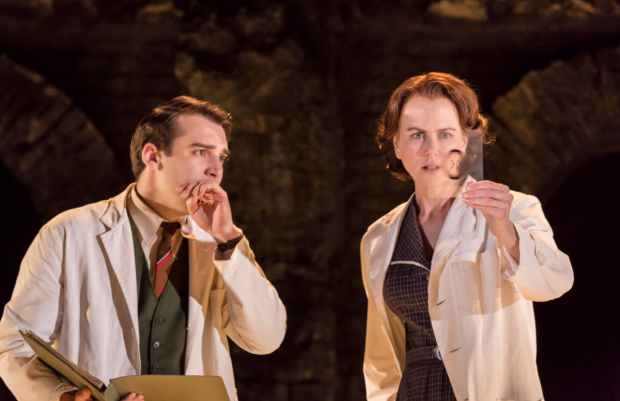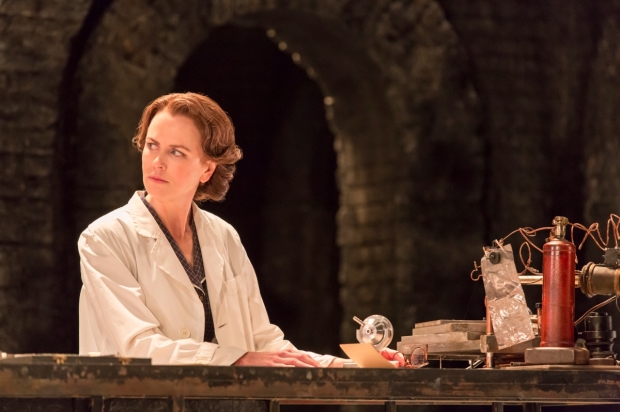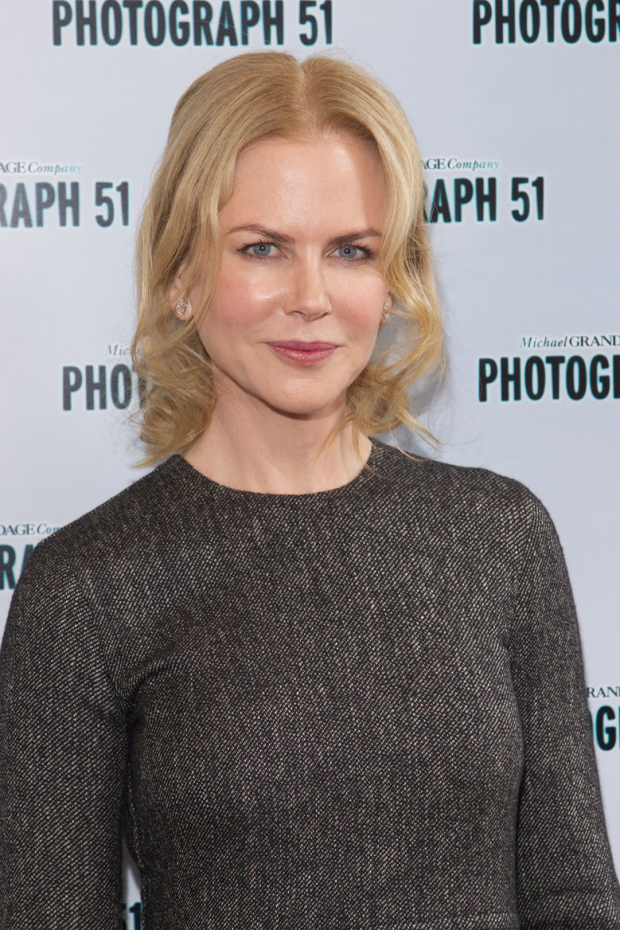Let's talk about sets: Christopher Oram on Photograph 51
The laboratories where the scientist Rosalind Franklin played her part in the discovery of DNA were located in a basement of King's College in London. The building had received extensive damage during the war, and so the labs were newly constructed at the time she conducted her research, but amongst the photographs of the site in the archives there were several evocative black and white images showing the quad and the extensive bomb damage it had received in wartime. The photographs show the surrounding buildings relatively unscathed though still coated in years of soot and grime from the pre-clean air London smog, but in the centre of the pictures the ground is ripped open and the vaulted brick arches that supported the floor of the quad stand exposed like the ribs of a wounded animal. The piles of brick rubble, the building blocks of the destroyed architecture resonated in my mind with the research team's search for the very building blocks of life itself.
On that research visit to the site something else that had struck me was the imposing sense of masculinity of the surrounding buildings, their classism, the rigour of the repeated lines of windows, the relative lack of adornment. The patriarchal architecture resonated in my mind with how Rosalind might have felt as she arrived from the relative freedom of post war Paris to the more conservative world of British post-war academia.
Although the quad at King's is surrounded by windows on all sides, I was put in mind of a previous research visit I had made for the play Red to the Laurentian library in Florence where Michalangelo’s staircase in the vestibule is surrounded by blank tapering windows, that suggest, yet deny, light. It was this blind, inward looking, space that was said to have inspired Mark Rothko to withdraw from his Seagrams building commission and to have the mural displayed not in the Four Seasons restaurant where they would be ignored by the diners there, but subsequently in a dedicated space, with no external influences, where they alone, and the thoughts they inspire could be contemplated. Recalling a conversation with the scientists at King's about the desire for stabilised laboratory conditions, and the need for minimal external influences the windows that surround the playing area of my design, a recreation of those soot coated walls of the King's College quad, became blind like those in the library in Florence, creating a solemn and mausoleum like space.
With the playing area situated at its centre, surrounded by both this classical shell, and the rubble of post-war London, representing the world in which Rosalind was working, then the floor of the set would represent the extraordinary discovery itself. And so it became an entirely underlit Perspex floor, so that the space can glow like a photographic lightbox, illuminating the players, casting ghostly shadows like x-rays on the architecture above, and bringing enlightenment both metaphorically and literally into the darkness.
– Christopher Oram
Photograph 51 runs at the Noel Coward Theatre until 21 November.














